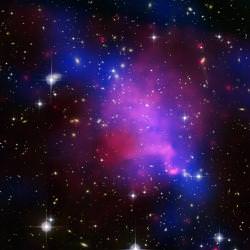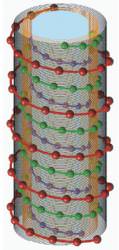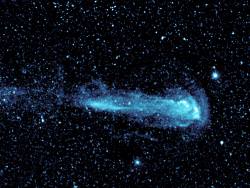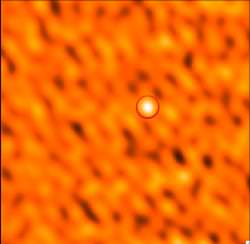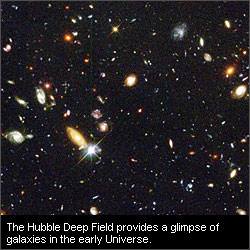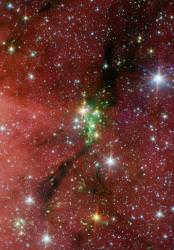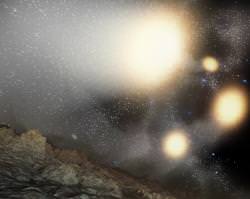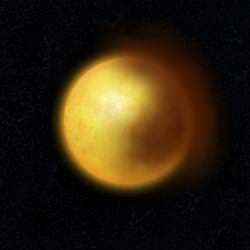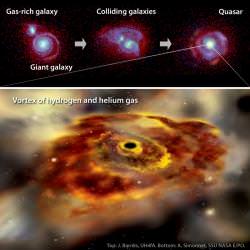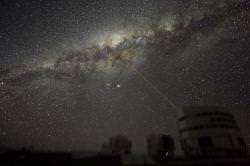This strange photograph is a composite image of Abell 520, a massive cluster of galaxies in the process of colliding with one another – it’s one of the most massive structures in the Universe. Several different instruments and observatories came together to produce the image, and the final result gave astronomers a big mystery: its dark matter is behaving strangely.
When galaxies collide, three ingredients come into play: individual galaxies and their billions of stars, hot gas in between the galaxies, and the mysterious dark matter that actually makes up the bulk of the mass. Optical telescopes can see the light from the stars in the galaxies, and X-ray observatories, like Chandra can see the radiation pouring out of the superheated gas. But the presence of dark matter has to be calculated by the way it warps light from more distant objects.
During gigantic collisions like this, astronomers believed that the dark matter and galaxies should stay together, even during the most violent collisions. And this was seen in another galaxy collision: the so-called Bullet Cluster. But in the collision of Abell 520, something surprising was seen.
They found a dark matter core, containing hot gas, but no galaxies. For some reason, the galaxies were stripped away from the densest part of the dark matter. Here’s what Dr. Hendrik Hoekstra, from the University of Victoria had to say:
“It blew us away that it looks like the galaxies are removed from the densest core of dark matter. This would be the first time we’ve seen such a thing and could be a huge test of our knowledge of how dark matter behaves.”
In addition to this core, they also found a corresponding “light region”, which had galaxies, but little or no dark matter. Somehow this collision separated the dark matter from the regular matter.
So what could have stripped these two apart? One possibility is that the galaxies and dark matter were torn apart by a series of gravitational slingshots. Unfortunately, the researchers weren’t able to come up with a realistic computer simulation that had gravitational interactions powerful enough to do this.
Here’s the stranger possibility: we know that dark matter is affected by gravity, but maybe there’s also some kind of unknown interaction between particles of dark matter. This would be extremely difficult to detect since we can’t even see the stuff.
The astronomers have secured time with the Hubble Space Telescope, and will come back and take another look with its powerful gaze. This should help answer some of the mysteries they’ve unearthed.
Original Source: Chandra News Release

